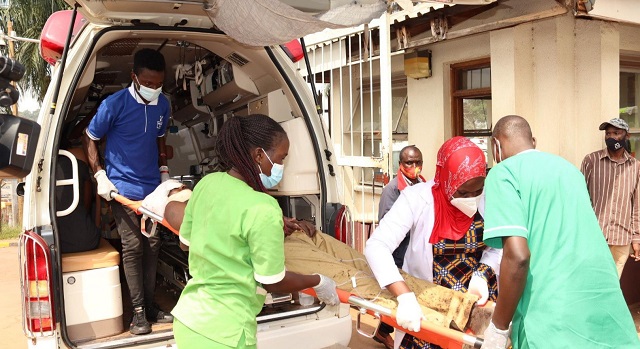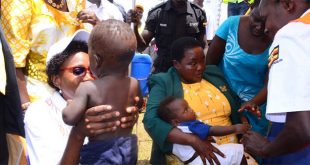
Kampala, Uganda | THE INDEPENDENT | It was a normal day for Mulago National Referral Hospital on Tuesday morning November 16, 2021. The causality ward had less than ten patients, the majority of whom were accident victims. Only a few staff were on duty, most of them completing their morning rounds as janitors went on cleaning the wards.
However, things changed very fast after 10:30am when ambulances started rushing in bomb blast victims. Agnes Ahimbisibwe, a cleaner at the hospital describes the first ambulance that arrived as chaotic.
“We did not know what had happened. We just saw the ambulance bring a police officer who had wounds on the leg and arm. Then we saw more ambulances arriving with police officers. We thought it was an accident until one of the ambulance drivers told us they were bomb blast victims,” she said.
A security officer in the causality ward that URN spoke also seemed oblivious to what was happening. “What happened? A bomb where?” she asked journalists who had rushed to cover the bomb blast victims. After the arrival of about ten injured police officers, a group of security officers rushed to deploy at the hospital to control crowds.
They began chasing away patient’s attendants who were around the causality ward. With the arrival of more ambulances ferrying in the injured, doctors inside the causality ward could be heard asking for re-enforcement. The Executive Director of the hospital, Dr. Baterana Byarugaba also decided to wear gloves and help the bomb victims.
The hospital administrators rushed in shortly to assess the situation. Shortly after, they directed that all the other patients move to other wards to create space for the bomb victims.
“We want this place to be cleared. All patients should be transferred and we reserve this place for the bomb victims. This should be done fast since we expect more patients,” David Niwamanya, the principal administrator Mulago National Referral Hospital ordered.
The transfer was painful to the patients as they were wheeled out of the ward with nurses ordering caretakers to look for means of relocating their respective patients to the recommended ward.
Two ambulances began ferrying all the patients to other wards. However, some of the wards were already full. “We are being asked to take these people to ward 17, but even there, there are no beds. I don’t even know where we shall take other people,” one of the drivers said.
There was confusion as the ambulances transferring patients from the wards blocked access for those ferrying in bomb blast victims. Shortly, oxygen cylinders, bed linen, gloves and syringes could also be seen arriving.
Hospital beds and gurneys full of dust were pulled out of storage, dusted and set up within the ward. In addition, intern doctors who are supposed to be on strike began arriving in the ward in groups to offer assistance to the victims with minor injuries.
Journalists cause commotion
With doctors rushing to save the lives of the victims being ferried in, journalists were another mess. With tens of them trying to interview the victims and getting footage of those being brought for treatment. It took the intervention of Niwamanya to plead with the journalists to allow the medics to do their work.
“We should give priority to saving lives. Let us not ask the victims more questions, most of them are still in shock. They need to be cared for not being interviewed,” Niwamanya pleaded with the journalists before evicting them from the ward.
*****
URN
 The Independent Uganda: You get the Truth we Pay the Price
The Independent Uganda: You get the Truth we Pay the Price



